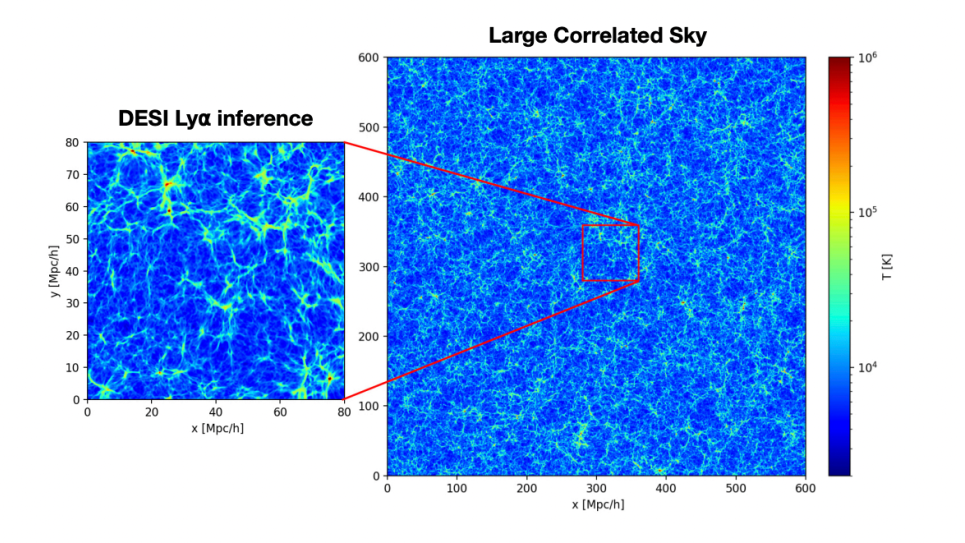
Example of a simulation volume the team will be running for the DESI Lyman-↵ inference campaign (left panel) and a large correlated sky simulation (on the right). Large volumes are necessary to accurately capture kSZ signal and enable cross-correlation studies between galaxies and Lyman ↵ forest.